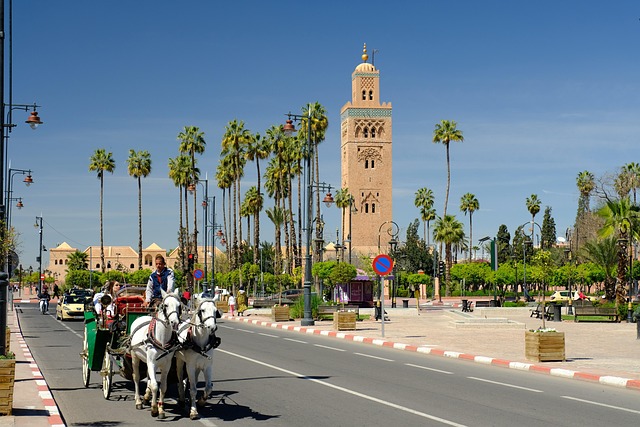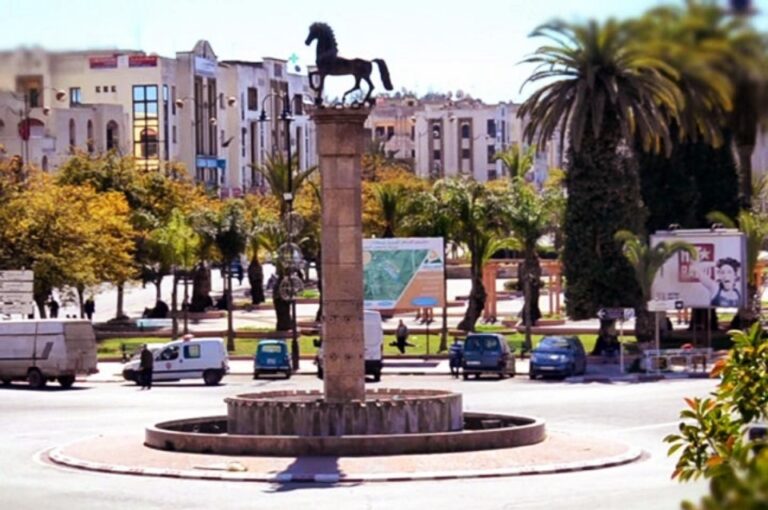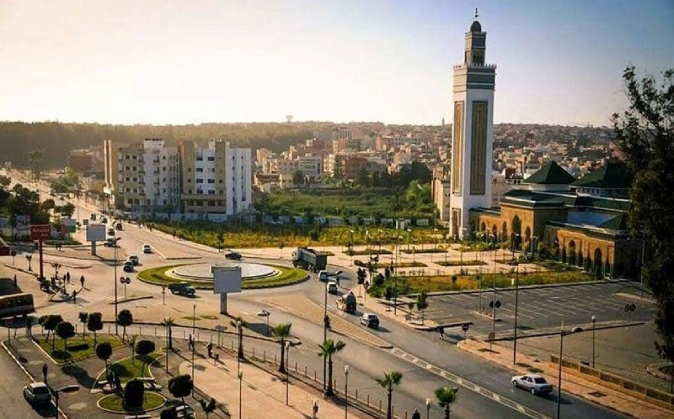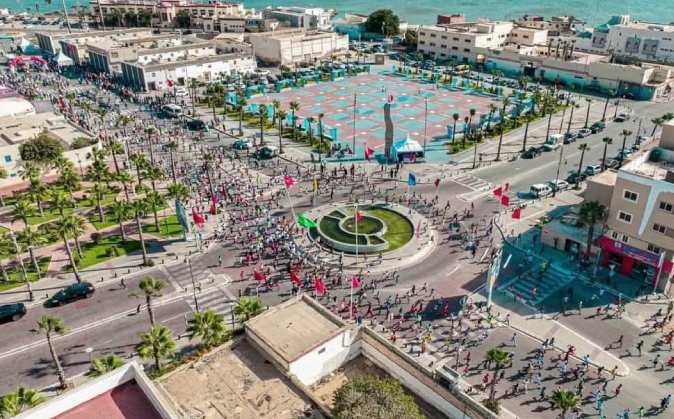Al Hoceima: Mediterranean Paradise of Beaches and Nature
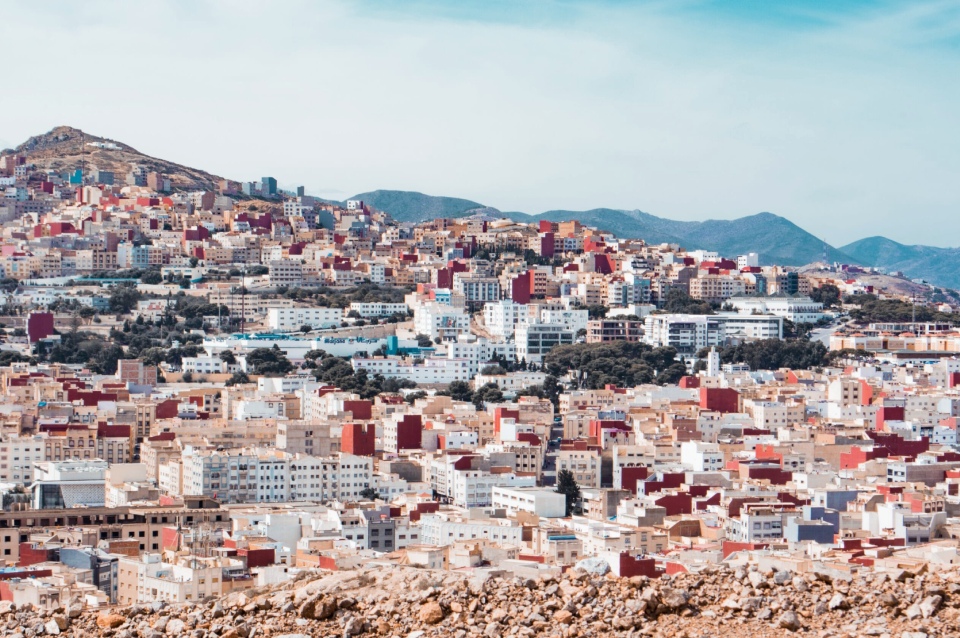
Al Hoceima is a hidden gem that captivates visitors with its pristine beaches, dramatic cliffs, and authentic Rif Mountain charm. This coastal paradise offers a refreshing alternative to Morocco’s bustling imperial cities, presenting travelers with crystal-clear waters, unspoiled natural beauty, and a laid-back Mediterranean atmosphere that feels worlds away from the tourist crowds.
Discovering Al Hoceima’s Natural Splendor
Al Hoceima Bay curves gracefully along the Mediterranean, creating one of North Africa’s most picturesque coastal landscapes. The city sits between the azure sea and the rugged Rif Mountains, offering visitors a unique combination of beach relaxation and mountain adventure. Unlike Morocco’s Atlantic coast, the Mediterranean waters here are calm, warm, and remarkably clear, making it perfect for swimming and water sports.
The crown jewel of the region is Al Hoceima National Park, established to protect the area’s exceptional marine and terrestrial biodiversity. This protected area encompasses both land and sea, featuring dramatic coastal cliffs, secluded coves, and rich marine ecosystems. The park is home to endangered Mediterranean monk seals, diverse seabird colonies, and vibrant underwater life that attracts divers from around the world.
The Best Beaches in Al Hoceima

Plage Quemado
The city’s main beach, Plage Quemado, stretches along the bay with golden sand and gentle waves. This well-maintained beach offers excellent facilities, including beachside cafés, sun lounger rentals, and water sports equipment. The promenade comes alive in the evenings as locals and visitors stroll along the waterfront, enjoying the sunset and fresh sea breeze.
Cala Bonita
True to its Spanish name meaning “Beautiful Cove,” Cala Bonita is a stunning crescent-shaped beach surrounded by rocky cliffs. The turquoise waters here are incredibly clear, making it ideal for snorkeling. The beach remains relatively uncrowded, offering a peaceful retreat for those seeking tranquility. A small beach bar serves refreshments and grilled seafood during the summer months.
Plage Sfiha
Located just outside the city, Plage Sfiha is a local favorite known for its pristine white sand and shallow waters. Families particularly enjoy this beach for its safe swimming conditions and spacious shoreline. The beach is less developed than Quemado, offering a more natural and authentic coastal experience.
Tala Youssef
This hidden gem requires a short hike to reach, but the effort is rewarded with one of the most beautiful beaches in the region. Surrounded by towering cliffs and accessible only by foot, Tala Youssef offers complete seclusion and crystal-clear waters perfect for swimming and diving. Pack a picnic and spend the day in this natural paradise.
Plage Isly (Torres de Alcala)
For adventurous travelers, the journey to Plage Isly combines history and natural beauty. Located near the 16th-century Spanish fortress of Torres de Alcala, this remote beach features dramatic rock formations and pristine waters. The area remains largely untouched by tourism, offering an authentic glimpse of Morocco’s wild Mediterranean coast.
Cultural Experiences and Local Life
Al Hoceima’s culture reflects its Rif Berber heritage mixed with Spanish and Mediterranean influences. The city’s architecture showcases white-washed buildings with blue accents, reminiscent of Spanish coastal towns. The local population predominantly speaks Tarifit (Rif Berber), Arabic, and Spanish, with French also widely understood.
The central market, Souk Tnine, offers an authentic glimpse into daily life. Here, local farmers from surrounding villages sell fresh produce, aromatic herbs, handcrafted items, and traditional Rif textiles. The market is particularly vibrant on Mondays, when it expands significantly and attracts vendors from across the region.
Don’t miss the opportunity to sample local cuisine, which features fresh seafood caught daily from the Mediterranean. Restaurants along the marina serve grilled sardines, sea bass, and prawns prepared with local herbs and olive oil. Traditional Rif dishes like “akouli” (couscous with vegetables) and “tagula” (barley flour porridge) offer unique culinary experiences you won’t find elsewhere in Morocco.
Outdoor Activities and Adventures

Hiking and Nature Walks
The Rif Mountains surrounding Al Hoceima provide excellent hiking opportunities. Trails range from easy coastal walks to challenging mountain treks. The path to Jebel Hamam offers panoramic views of the bay and surrounding countryside. Local guides can arrange multi-day treks through Rif villages, providing insights into traditional Berber life.
Water Sports
The calm Mediterranean waters make Al Hoceima ideal for various water activities. Kayaking along the coast reveals hidden caves and secluded beaches inaccessible by land. Stand-up paddleboarding has become increasingly popular, with equipment rentals available at major beaches. The bay’s steady winds also attract windsurfers and kitesurfers, particularly during spring and summer months.
Diving and Snorkeling
The marine biodiversity of Al Hoceima National Park creates exceptional diving conditions. Several dive centers in the city offer guided dives to explore underwater caves, rocky reefs, and shipwrecks. Snorkelers can enjoy the rich marine life even in shallow waters, with colorful fish, octopuses, and sea urchins easily spotted along rocky shores.
Fishing Experiences
Join local fishermen for a traditional fishing excursion. Early morning trips on small boats provide authentic cultural experiences and the chance to catch your own dinner. Many fishermen are happy to share their knowledge of traditional fishing methods passed down through generations.
Day Trips from Al Hoceima
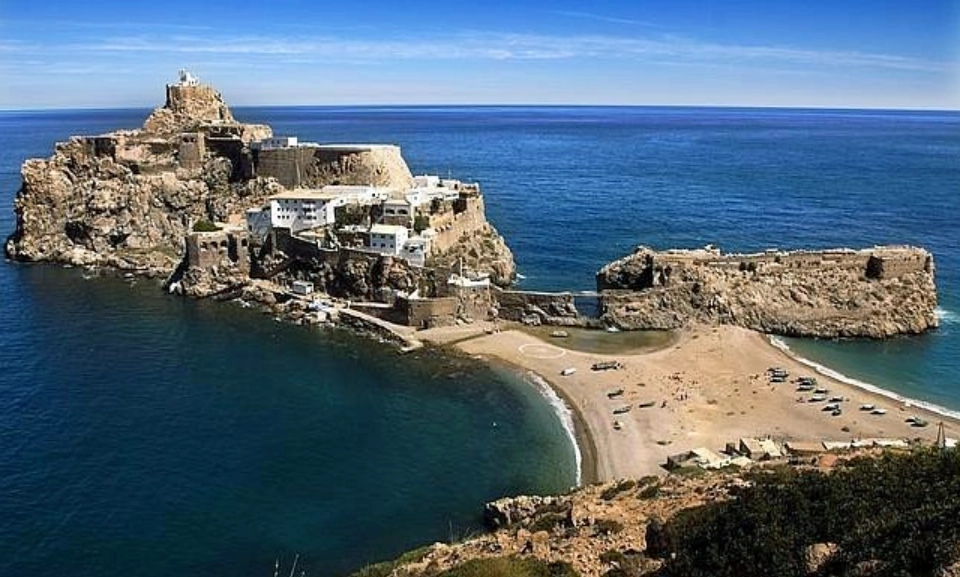
Peñón de Alhucemas
Visible from the city, this small fortified island remains under Spanish sovereignty. While you cannot visit the island itself, boat tours around the islet offer interesting perspectives on this unique geopolitical situation and provide excellent photo opportunities.
Imzouren
This nearby town serves as the region’s commercial hub and offers a more authentic local experience. The Thursday market here is one of the largest in the Rif, where you can find everything from livestock to handcrafted goods.
Chefchaouen
Although a three-hour drive away, many visitors combine their Al Hoceima trip with a visit to Morocco’s famous blue city. The winding mountain roads offer spectacular scenery, passing through traditional Rif villages and cedar forests.
Torres de Alcala
This historic Spanish fortress from the 16th century sits dramatically on a coastal promontory. The site combines history, architecture, and stunning coastal views. The surrounding area features pristine beaches and excellent fishing spots.
Practical Travel Tips

Best Time to Visit
Al Hoceima enjoys a Mediterranean climate with hot, dry summers and mild, wet winters. The ideal visiting period runs from May to October, when temperatures range from 25-30°C and rainfall is minimal. July and August are busiest with Moroccan tourists and diaspora returning home, while June and September offer pleasant weather with fewer crowds. Spring brings wildflowers to the mountains, creating spectacular landscapes.
Getting There
Al Hoceima’s Cherif Al Idrissi Airport receives domestic flights from Casablanca, with seasonal international connections. Most international visitors fly into Tangier or Fez, then travel overland. The drive from Tangier takes approximately 4-5 hours along scenic coastal and mountain roads. Regular buses connect Al Hoceima with major Moroccan cities, though travel times can be long due to mountainous terrain.
Getting Around
The city center is compact and walkable, with most hotels, restaurants, and the main beach within easy reach. Taxis are abundant and inexpensive for shorter trips. For visiting outlying beaches and attractions, renting a car provides maximum flexibility. Several agencies operate in the city center. Motorcycles and scooters can also be rented for more adventurous travelers.
Accommodation Options
Al Hoceima offers accommodation ranging from budget guesthouses to upscale hotels. The most popular area to stay is along the bay, where hotels offer sea views and easy beach access. For quieter options, consider properties in residential neighborhoods slightly inland. During summer, booking in advance is essential as accommodation fills quickly. Camping is popular among Moroccan visitors, with designated campgrounds near several beaches.
Safety and Health
Al Hoceima is generally very safe for tourists, with low crime rates and friendly locals. Standard travel precautions apply: watch belongings at crowded markets and beaches, avoid isolated areas after dark, and use registered taxis. The Mediterranean sun is intense during summer—apply high-SPF sunscreen regularly and stay hydrated. Tap water is technically potable but bottled water is recommended for sensitive stomachs.
Cultural Considerations
While Al Hoceima is more relaxed than inland Moroccan cities, modest dress is appreciated, especially away from beach areas. Swimwear is perfectly acceptable at beaches, but cover up when walking through town. During Ramadan, restaurants may have limited hours, though tourist areas remain accommodating. Learning a few Arabic or Berber phrases is greatly appreciated by locals, though Spanish is widely understood.
Money and Costs
Morocco’s currency is the Dirham (MAD). ATMs are readily available in the city center, and most accept international cards. Exchange bureaus offer competitive rates for major currencies. Al Hoceima remains relatively affordable compared to Morocco’s tourist hotspots. Budget travelers can manage on $30-40 per day, while mid-range travelers should budget $60-80. Credit cards are accepted at hotels and larger restaurants, but cash is essential for markets, taxis, and smaller establishments.
Communication
Free WiFi is available at most hotels, cafés, and restaurants. Mobile coverage is excellent throughout the city and surprisingly good in surrounding areas. Local SIM cards are inexpensive and offer generous data packages—purchase them at official carrier shops with your passport. The main providers are Maroc Telecom, Orange, and Inwi.
What to Pack
- Sun protection: high-SPF sunscreen, hat, sunglasses
- Comfortable walking shoes for exploring and light hiking boots for mountain trails
- Swimwear and beach gear including snorkel equipment if you have your own
- Light, breathable clothing for daytime and a light jacket for cooler evenings
- Modest clothing for visiting town areas and local markets
- Waterproof phone case for beach activities
- Basic first aid kit and any prescription medications
- Power adapter (Morocco uses European two-pin plugs, 220V)
- Reusable water bottle to reduce plastic waste
- Camera or smartphone with good battery life for capturing stunning landscapes
Shopping and Souvenirs
While Al Hoceima isn’t a major shopping destination, you’ll find unique items reflecting Rif culture. Local markets sell handwoven textiles, particularly the distinctive striped “akhnif” blankets traditional to the Rif region. Pottery, olive oil, local honey, and aromatic herbs make excellent gifts. The fishing industry inspires nautical-themed crafts and artwork. For authentic experiences, visit local cooperatives where women produce traditional textiles and argan oil products.
Local Festivals and Events
The city celebrates several annual events worth timing your visit around. The Al Hoceima International Marathon typically takes place in June, attracting runners to compete along scenic coastal routes. Summer festivals feature music, dance, and cultural performances celebrating Rif heritage. Religious festivals follow the Islamic calendar, with Eid celebrations bringing special atmosphere to the city. Check local calendars for exact dates as they vary annually.
Sustainable Tourism
As Al Hoceima develops its tourism infrastructure, visitors can help preserve its natural beauty. Avoid littering on beaches and dispose of waste properly. Support local businesses by shopping at markets and eating at family-run restaurants. Respect marine protected areas by following diving and snorkeling guidelines. Consider joining beach cleanup initiatives organized by local environmental groups. When hiking, stay on marked trails to protect fragile ecosystems.
Hidden Gems and Off-the-Beaten-Path
Beyond the main attractions, Al Hoceima offers lesser-known experiences for curious travelers. Early morning visits to the fishing port reveal traditional daily life as boats return with fresh catches. The Spanish cemetery on a hillside overlooking the bay provides historical insight and panoramic views. Small villages in the surrounding mountains welcome visitors interested in rural Rif culture. Local shepherds sometimes allow visitors to observe traditional cheese-making from goat’s milk.
Food and Dining Recommendations
Seafood dominates Al Hoceima’s culinary scene, with restaurants along the marina offering the freshest catch. Try “sardine kefta” (sardine balls), “fish tagine,” and “grilled prawns” prepared with local spices. For traditional Rif cuisine, seek out restaurants serving “tagula” and “akouli.” Street food includes fresh fruit juices, grilled corn, and “msemen” (Moroccan pancakes). The promenade’s cafés are perfect for mint tea and pastries while watching sunset. Don’t leave without trying locally caught sea urchins, a delicacy when in season.
Final Thoughts
Al Hoceima represents Morocco at its most natural and unspoiled. This Mediterranean paradise offers travelers seeking authenticity, natural beauty, and relaxation a perfect destination away from well-worn tourist circuits. Whether you’re lounging on pristine beaches, hiking mountain trails, diving in crystal-clear waters, or experiencing Rif Berber culture, Al Hoceima provides unforgettable experiences that showcase a different side of Morocco.
The city’s remoteness has preserved its authentic character, making it ideal for travelers who appreciate destinations before mass tourism transforms them. As infrastructure develops, Al Hoceima is becoming increasingly accessible while maintaining its charm and natural beauty. Visit now to experience this Mediterranean jewel in its most authentic form.
FAQs
Q: Is Al Hoceima safe for tourists?
A: Yes, Al Hoceima is very safe for tourists. The city has low crime rates and locals are welcoming to visitors. Standard travel precautions apply, such as watching your belongings in crowded areas and using registered taxis. The tourism infrastructure is developing, and authorities prioritize visitor safety. Women traveling alone generally report feeling comfortable, though modest dress is appreciated away from beach areas.
Q: How many days should I spend in Al Hoceima?
A: A minimum of 3-4 days allows you to experience the main beaches, explore the city, and take one or two day trips to surrounding areas. A week-long stay enables deeper exploration of remote beaches, hiking in the Rif Mountains, and immersing yourself in local culture. Many visitors combine Al Hoceima with Chefchaouen or other northern Morocco destinations for a comprehensive trip.
Q: What is the best way to reach Al Hoceima from major cities?
A: From Casablanca, take a direct flight to Al Hoceima (approximately 1 hour) or fly to Tangier/Fez and drive. Driving from Tangier takes 4-5 hours along scenic but winding mountain roads. From Fez, the journey is about 5-6 hours. Regular bus services connect Al Hoceima to major cities, though journeys are longer due to terrain. Renting a car provides flexibility for exploring the region but requires confidence navigating mountain roads.
Q: Can I swim in Al Hoceima’s beaches year-round?
A: The Mediterranean swimming season runs from May to October when water temperatures are comfortable (20-25°C). July and August offer the warmest waters. Outside these months, swimming is possible but water temperatures drop to 15-18°C, which most find too cold. Beaches remain beautiful for walks and relaxation year-round, though winter months see occasional rain and cooler temperatures.
Q: Do I need to speak Arabic to visit Al Hoceima?
A: While Arabic (and locally, Tarifit Berber) is the primary language, many residents speak Spanish due to historical connections and proximity to Spain. French is also widely understood in tourist areas. English is less common but increasingly spoken by younger people and in hotels. Learning basic Arabic or Spanish phrases enhances interactions with locals, who appreciate the effort. In restaurants and hotels catering to tourists, language barriers are minimal.


